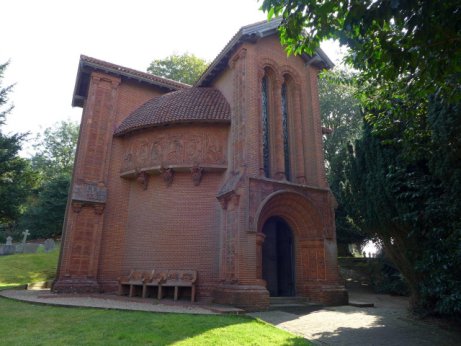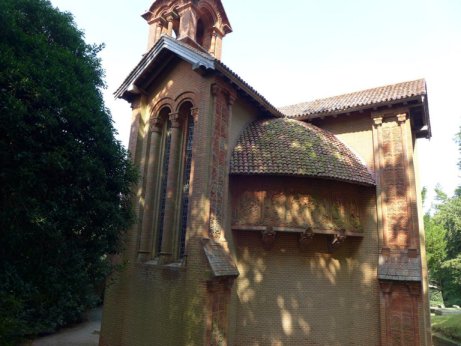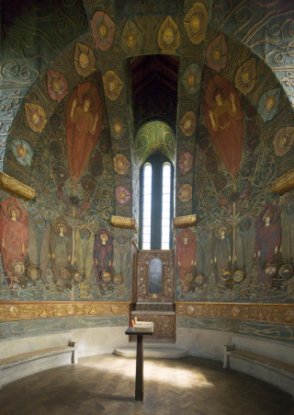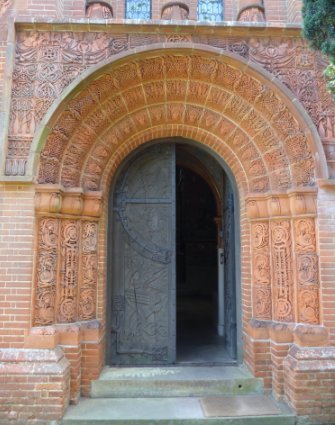|
Watts Chapel, Surrey |
|||
|
|
|||
 |
 |
||
| The interior of the church, a Byzantine-like dome, represents the angelic heirarchy of Heaven, with images of angels intertwined with the Tree of Life. There are four large panels, each dominated by a seraph. Mary Watts tells us that they show four different qualities; the gifts of nature, the gifts of God, the joys and sorrows of mankind, and the gifts of endeavour. | |||
 |
 |
||
| The terracotta panels on the outside of the church were made by the villagers of Compton, including children. Here is one of the four large friezes; this one, from the south-east side, shows the spirit of hope. | |||
 |
|||
| The door is surrounded by terrcotta panels. This one (right, below) represents 'the flower that closes with the setting sun, and opens again when darkness is passed'. The door itself was carved by the local wheelwright, and the ironwork was forged by the blacksmith, for a fee of twenty-one pounds and five shillings. | |||
 |
 |
||
|
|
|||
Art in context index Home page - enjoy the site |
|||
|
|
|||